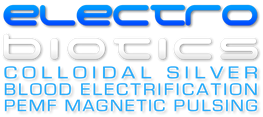Colloidal Silver Definitinons
Courtesy of SilverGen-
Agglomeration When particles in a colloidal suspension become too densely packed, some of them will begin to share electron rings with each other and in effect become a larger particle. The visual effect is that the light is reflected differently from these larger particles and the color begins to shift toward yellow. As more particles agglomerate, the yellow color becomes more pronounced. The depth of the color change is an indicator of how much agglomeration has occurred. With severe agglomeration, the color can become so deep yellow that it may look almost brown. Colors other than yellow usually indicate the silver has combined with minerals.
Argyria. A condition caused by ingesting too much silver which is manifested by the skin turning shades of blue or gray. This condition is caused by ingesting too much silver salts or metallic silver concentrations. The condition has never been associated with ingesting colloidal silver.
Colloidal silver. When silver particles are suspended and evenly dispersed throughout a solution. All the particles are microscopic and are electrically charged with a positive potential. Since "likes" repel, the particles try to maintain the same distance from each other, this results in a homogenous dispersed solution.
Current. Electron flow which is measured in amperes. Electron flow is proportionate to voltage and inversely proportionate to resistance.
Constant current. Current flow is kept at a constant value by increasing or decreasing voltage as required to maintain the desired (or preset value) current flow. In the process of making colloidal silver, the voltage is reduced as the current tries to rise. This is what keeps the silver particle size constant.
Constant voltage. Voltage is kept at a constant level (typically 27 volts) and current is then proportionate to the resistance in the circuit (silver/water solution). In a colloidal generation, the current rises dramatically as the increased silver content of the water reduces the resistivity of the water.
Ion. An atom which has lost or gained one or more of its electrons and is left with a positive or negative charge.
PPM. Parts per million of a solution. i.e.: 10 PPM silver means 10 parts silver to 1 million parts water. This is generally defined as mg/l. Therefore 1 mg. silver in 1 liter of water is 1 PPM, etc.
Milliampere. One thousandth of one ampere. A measure of current flow.
Runaway. When current flow rises linearly, exponentially or logarithmically. The net effect is the current rises uncontrollably with time.
Tyndall effect. The clearly visible path of a beam of light through a colloidal dispersion. Each of the tiny particles in the dispersion reflects the light and scatters it. A true solution does not show this effect because a solution consists of dissolved solids or other liquids combined.
Voltage. A measure of electrical potential or electrical pressure.
Bestsellers

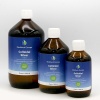
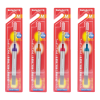


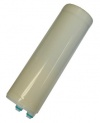
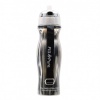

Important Links
- Colloidal Silver - Introduction
- What Exactly Is Colloidal Silver?
- Colloidal Silver FAQ
- Colloidal Silver Research Studies
- Colloidal Silver Articles
- The Real Facts on Colloidal Silver
- Blood Electrification
- Blood Zapper Comparisons
- Blood Electrification US Patent: # 5,139,684
- Blood Zapping Testimonials
- Magnetic Pulsing - (PEMFs)
- PEMF Shattering Cancer with Resonant Frequencies
- Dr. Robert C. Beck
- The Beck Protocol
- Dr. Bob Beck - Suppressed Medical Discovery
- Dr. Hulda Clark
- Vaccination - The Hidden Truth
- Nutricide - Codex Alimentarius
- Vitamin C - High Dose
- Vitamin D3 - Amazing Info!
- Dental Amalgam Controversy
- Water Fluoridation Controversy
- Science News 1991
- Highest Source of Fluoride - Non-Organic Food!
- Chlorella - Heavy Metal Removal
- Jane Burgermeister on Swine Flu Vaccine
- Amalgam/Mercury Fillings - News 12 Spot
- Swine Flu (A/H1N1) Vaccine Facts
- Dr. McDougall MD - The Perils of Dairy Products
- Dr. Royal Raymond Rife - A Brief History
- Healing Cancer From Inside Out
- Food Matters
- Dying To Have Known
- Acidic Vs. Alkaline Blood
- Molecular Hydrogen
- The Cancer Act 1939?
- CBD Oil
